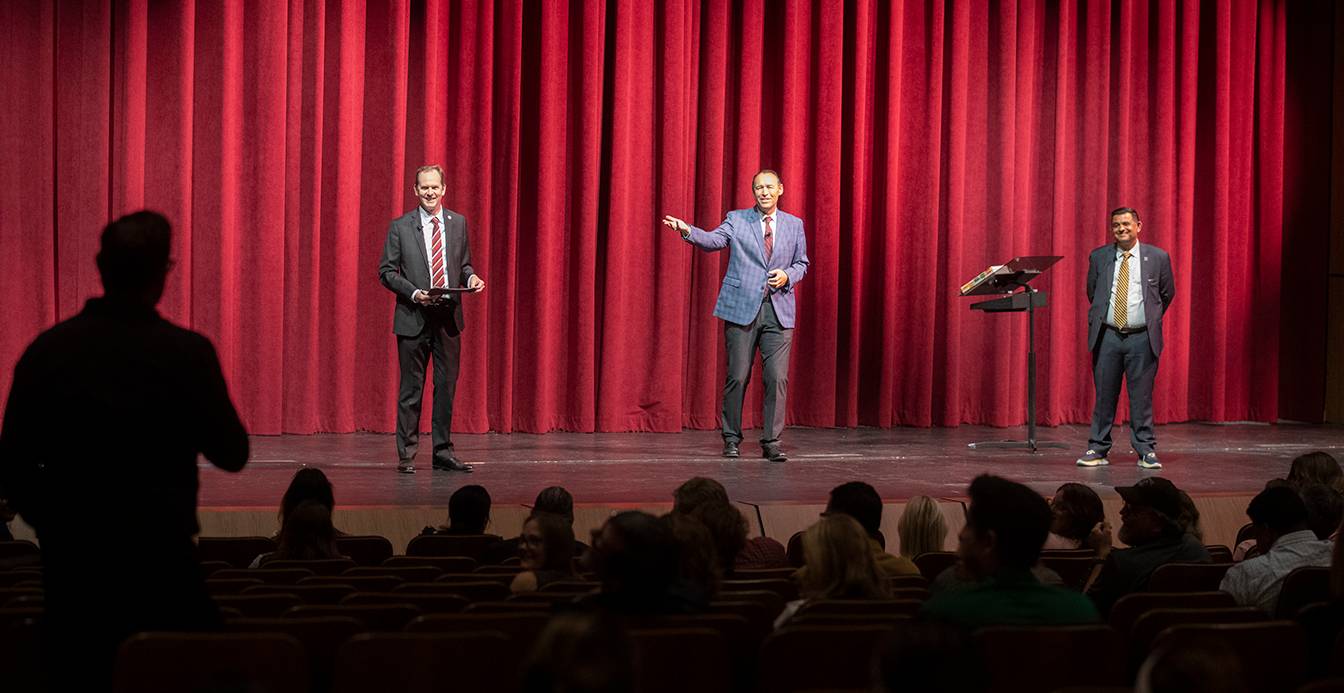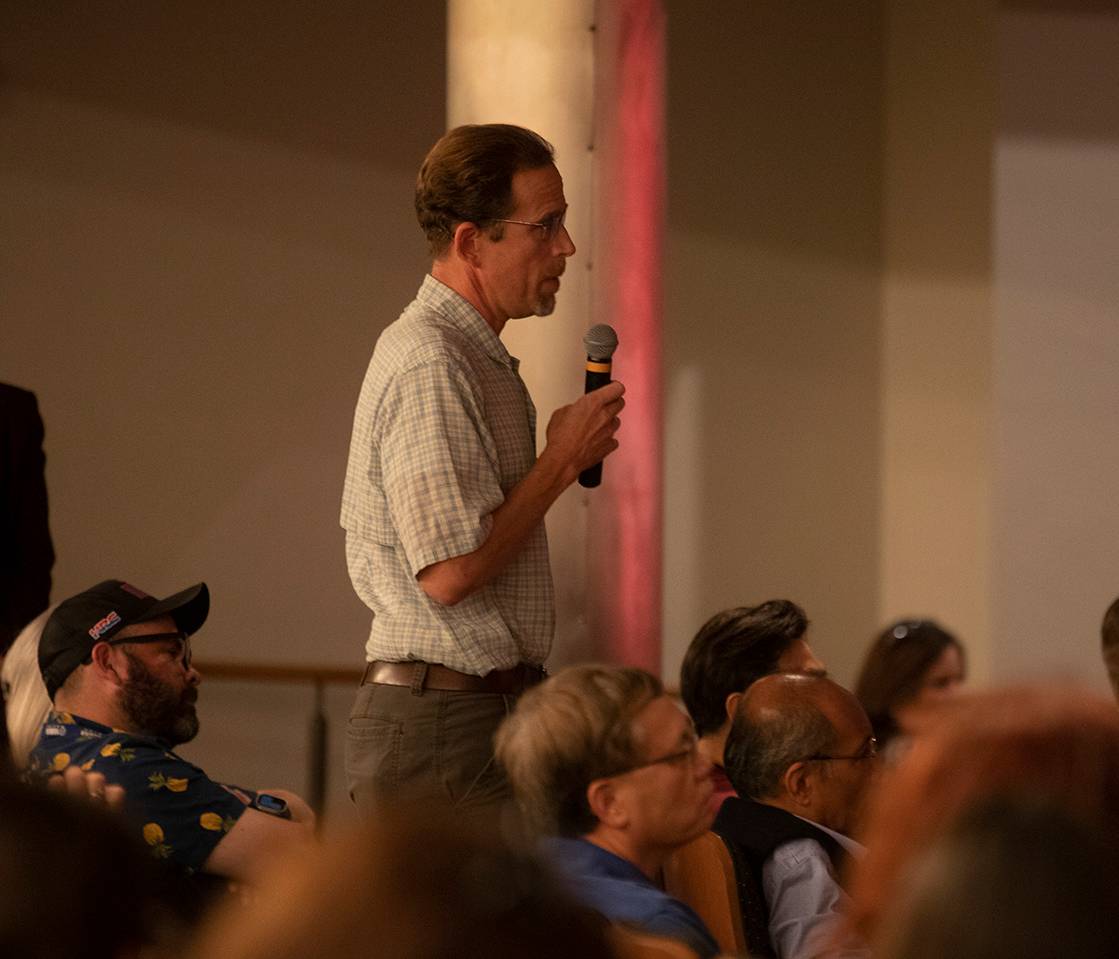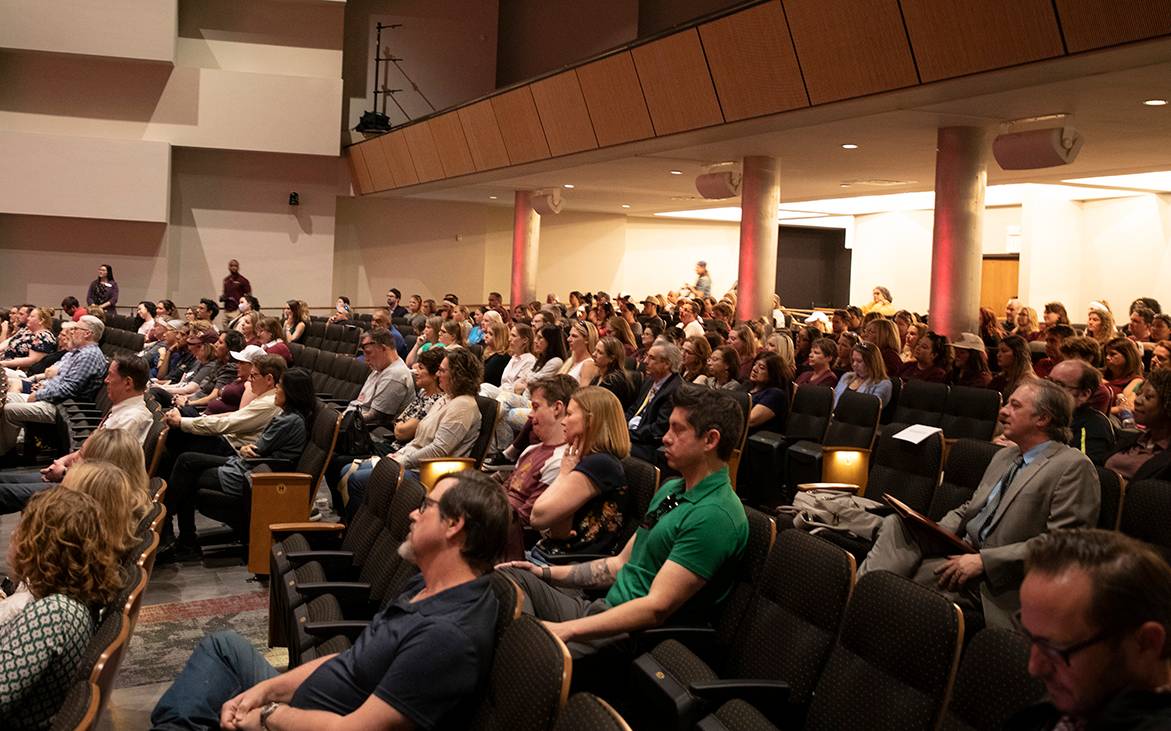Matt Joyce | May 3, 2023

At a Texas State University Run to R1 Town Hall this week, President Kelly Damphousse emphasized the strengths and opportunities of TXST’s pursuit of the R1 classification while underscoring the university’s enduring commitment to its teaching mission.
Damphousse joined Vice President for Research Dr. Shreek Mandayam and Provost Dr. Gene Bourgeois for the town hall on the San Marcos Campus, which was followed by a Run to R1 1K run/walk. The university broadcast a livestream of the event, and a concurrent 1K was held at the Round Rock Campus.
Damphousse has set a 2027 goal for Texas State to achieve Research-1 (R1) Carnegie classification, the highest tier of research university. Currently, Texas State is classified as R2.
“This is an achievable goal — you all have positioned yourself to be there,” Damphousse said. “When our research shifts into the next gear, the amount of discovery and innovation that we develop here changes Texas, changes America, and changes the world.”
R1 classification is based on three key metrics: Ph.D. graduates, postdoctoral students, and externally funded research, Damphousse explained. After becoming the university’s 10th president last summer, Damphousse formed the Presidential Commission on the Run to R1 to accelerate TXST’s progress in these metrics.
He said TXST is well positioned on externally funded research and development, and it has made investments to grow its postdoctoral student count. Meanwhile, the university is working to grow its Ph.D. programs with targeted investments to graduate more Ph.D. students by 2026.

In response to questions from faculty members, Damphousse encouraged colleges across the university to consider which new Ph.D. programs could be introduced.
“We shouldn’t be chasing metrics,” Damphousse said. “We should do things that we think are valuable. Adding certain Ph.D. programs just to get that score is unwise. It’s not a good use of our resources. But if the faculty believe there’s room in the world for another Ph.D. program in humanities, for example, and we can do it, then by all means we should be funding that.”
Damphousse said R1 institutions attract more faculty members interested in a vibrant research enterprise, which feeds innovation that reaches across the economy.
“When there’s an R1 institution, there is a high level of research activity and innovation,” he said. “That means there are companies that get spun out by the faculty or companies that spin in to work with our faculty. That means they will hire our students as interns and provide jobs for our students when they graduate. We are building a tax base here with high paying jobs around us.”
R1 universities also attract more students, which expands the university’s resources. TXST expects 42,000 high school seniors to apply to attend the university this fall, Damphousse said.
“As we become an R1 institution, our national profile grows and we start to attract students from across the country, not just within the state, and internationally as well,” he said.
In response to questions from faculty members, Damphousse, Mandayam, and Bourgeois talked about ways the university is working to support faculty in pursuing grants and reducing the teaching load of postdoctoral students to give them more time to complete their research.
TXST stands to grow from state funding, research partnerships, and general economic development, Damphousse said. But with the growth in resources, he noted, the administration needs to support its instructional faculty. Research-intensive faculty engaged in writing grants and pursuing research require more time away from the classroom.
“We’re never going to give up our teaching mission,” he said, adding that means acknowledging the important role of instructional faculty, including through promotion and compensation.
“Some people earn a Ph.D. and want nothing more than to teach and work with students,” he said. “That’s valuable. We value that by providing people an opportunity to increase their pay and increase their rank and so on.”

In response to a question about how the Run to R1 and the focus on research could affect staff members, Damphousse pointed to the growth in resources across the university.
“As we have more resources as a university, it’s not just going to be invested in the faculty,” he said. “It has to be invested in the students, our student success initiatives — for scholarships, for study abroad, for internships. We’ll also have more resources for our staff. We can do a really good job of providing enhanced professional development opportunities for our staff members to grow within their professions.”
Damphousse also addressed the potential for salary growth across the university, including for faculty, staff, and student works.
“As our resources grow, our capacity to give raises grows as well,” he said.
A recording of the Town Hall and responses to additional faculty and staff questions will soon be published on President Damphousse’s Run to R1 website.
Share this article
For more information, contact University Communications:Jayme Blaschke, 512-245-2555 Sandy Pantlik, 512-245-2922 |
